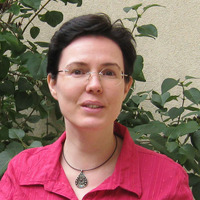Agnès Lenepveu-Hotz
Université de Strasbourg, Département d'études persanes, Faculty Member
Research Interests:
A paradox exists when editing a Persian work or studying a linguistic form in diachrony: the linguistic findings are based on existing manuscripts, but in turn, these findings determine the editing choices. The problem increases with a... more
A paradox exists when editing a Persian work or studying a linguistic form in diachrony: the linguistic findings are based on existing manuscripts, but in turn, these findings determine the editing choices. The problem increases with a dialectal feature, for example, the preposition mar. Thus, several difficulties will be examined in this paper, such as the choice of a corpus, the date or the geographical origin of such a feature, and the contradictions which several editions present for a same text. Only more reliable manuscripts – ancient or autograph - can allow us to assess the functioning of this morpheme.
Research Interests:
Abstract: In New Persian, the aspecto-modal suffix -ē is a marker of counterfactuality and past habitual. It was frequently used in texts between the 10th and the 16th centuries and did not disappear until the 18th century (earlier in... more
Abstract:
In New Persian, the aspecto-modal suffix -ē is a marker of counterfactuality and past habitual. It was frequently used in texts between the 10th and the 16th centuries and did not disappear until the 18th century (earlier in some regions, depending on the dialect). However, in texts of the 15th century, ē began to be replaced by the prefix mē-, which marks the concomitance, the present habitual, the frequentative-distributive and the continuative perfective. This article demonstrates that this replacement is not only morphological but that it also has a consequence for the reorganization of the aspectual and modal markings in New Persian: the replacement of -ē by mē- in all occurrences progressively leads to a loss of the marker’s first value of concomitance, it expresses all presents, concomitant and non concomitant. The old unmarked present is marginalized and ends up expressing the subjunctive. This evolution has to be compared with the development described by different scholars about several unrelated languages.
Keywords: New Persian; aspect; mood; past habitual; counterfactuality
In New Persian, the aspecto-modal suffix -ē is a marker of counterfactuality and past habitual. It was frequently used in texts between the 10th and the 16th centuries and did not disappear until the 18th century (earlier in some regions, depending on the dialect). However, in texts of the 15th century, ē began to be replaced by the prefix mē-, which marks the concomitance, the present habitual, the frequentative-distributive and the continuative perfective. This article demonstrates that this replacement is not only morphological but that it also has a consequence for the reorganization of the aspectual and modal markings in New Persian: the replacement of -ē by mē- in all occurrences progressively leads to a loss of the marker’s first value of concomitance, it expresses all presents, concomitant and non concomitant. The old unmarked present is marginalized and ends up expressing the subjunctive. This evolution has to be compared with the development described by different scholars about several unrelated languages.
Keywords: New Persian; aspect; mood; past habitual; counterfactuality
